Your Guide to the Loire Valley
Gardens of the Loire Valley
Gardens to visit with Loire Valley Wine Tour
Gardens of the Loire Valley
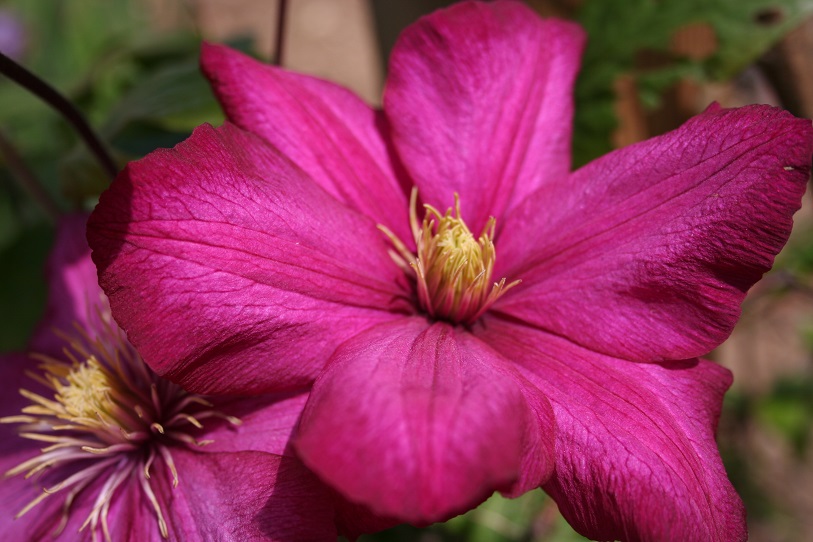
The gardens of the Loire Valley, especially those associated with the region's chateaux, are known to garden enthusiasts throughout the world. Our tours typically explore two gardens a day, with a drive between each through the beautiful countryside of the Loire Valley. Lunch is included.
Colin Elliott is delighted to bringing these exceptional gardens to a wider audience, to share our love and enthusiasm for the region and its gardens. Colin is a former professional garden designer,owner of the prestigeous Design and Landscape Centre and professor of horticulture with the Garden Design Academy.
Of the many gardens in the region, nearly 100 take part in the annual Rendez-vous aux Jardins, a national 'open gardens' event in June, while 28 are designated Jardins Remarquable by the Ministry of Culture.
Come with us then on this voyage of discovery into the UNESCO World Heritage Site of the Loire Valley. Here you will find gardens of all sizes and types, from ancient to contemporary, both grand and simple.
Discover in the art and craft of French gardens and gardening, and in the French way of life, a celebration of the natural environment and cultural landscape of this most fortunate place.
The Region Centre - Val de Loire is composed of six departments, the Eure et Loir * (28), the Loiret (45), the Loir et Cher (41), the Cher (18), the Indre et Loire (37) and the Indre (36). Our tours are based within these departments, particularly in a wide area around the city of Tours in the Indre-et-Loire.


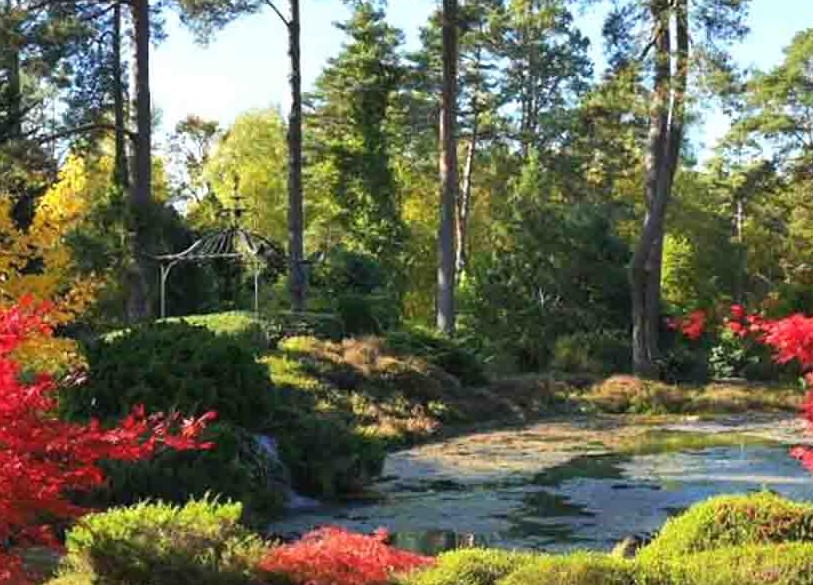
South of Paris and in the North-East of our region, we visit the Loiret for the gardens in and around Orléans in particular. It is a land of forests, where the river Loire and its tributaries are ever present features of the landscape.
Of the two dozen gardens open to the public, these are amongst those we have visited during past tours:
Orlean's celebrated park of four seasons. Once the home of the exciled English politician and philosopher Lord Bolingbroke, this 35-hectare park is the source of the little river Loiret, which bubbles up in the grounds. It is a heady mix of traditional French and English-style landscapes, contemporary gardens and national plant collections.
These gardens are worth visiting at any time of the year with huge collections of plants coming into their own as the seasons progress. National collections include those of Iris and Clematis, but there are also Fuchsias, Roses, Dahlias and other flowering plants to enjoy.
Events are held throughout the year and children are particularly encouraged to visit and learn. In February an Orchid exhibition, April a Fête des plantes and many more shows, conferences and tours.
A series of themed gardens create further interest and include a rockery, vegetable garden and a flower meadow, in additon to an exotic butterfly house. Come to learn or come to relax; La Source offers it all.
In the heart of the Forest of Orléans, this nature reserve and landscaped arboretum was inspired by the work of the celebrated Edwardian garden designer Gertrude Jekyll.
Grandes Bruyères was begun in 1968 and has been in continuous developement ever since. It was opened to the public in 1991. The garden covers 12-hectares out of 24-hectares of woodland around the family home. It features a remarkable collection of nearly 7,000 trees and shrubs, including two "National Collections".
A French-style garden close to the house is formally outlined in clipped Box and Yew, with pergolas of scented Roses mixed with Clematis. A flower and vegitable garden completes this very French scene.
Elsewhere grass paths take visitors on a journey through the woods and its huge collection of rare plants, benefiting from the shade and the sandy soil. The plantings are divided into sections for American and Asiatic species including heathers, conifers, Oaks, Magnolia, flowering Dogwood and many more species.
During one visit we had a special treat when we were guided through the garden by its owner, Countesse Brigitte de la Rochefoucauld. Since 2015 it has worked in partnership with the Château de Chamerolles, its Renaissance-style gardens surrounding the castle also worth a visit.
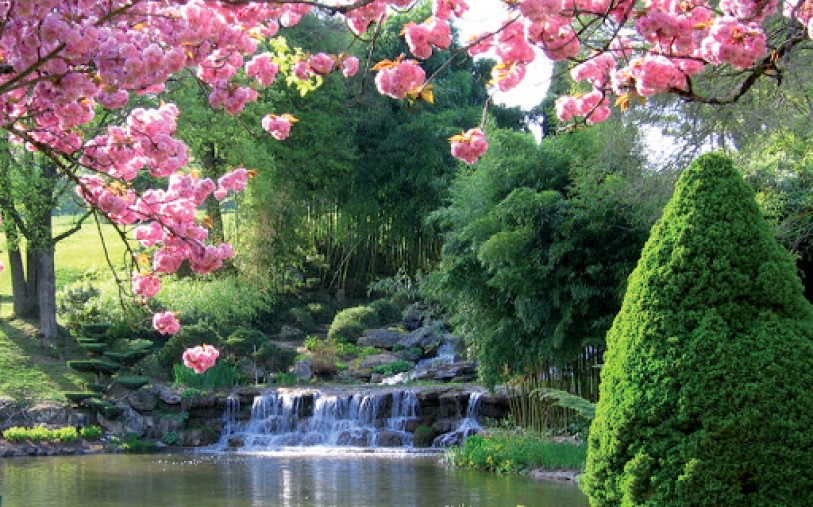


The Cher department is named after the river Cher, a major tributary of the Loire, and is the most easterly department of our region.
An English Garden in the Berry. Apremont is (officially!) one of France's prettiest villages, where medieval cottages, once the homes of quarry workers, cluster on the river bank beneith the castle walls. The remarkable gardens where begun fifty years ago and opened their gates to the public in 1976.
The gardens have been created by damming a valley stream to create a series of ponds, converting a disused quarry into a spectacular rockery and waterfall and turning meadows into borders and formal features.
Russina artist Alexander Serebriakoff was brought in to design a series of modern folly buildings, including a Chinese style bridge, Turkish pavilion and Russian belvedere.
English-style flower gardens are a feature, including a white garden inspired by Sissinghurst and there are huge collections of trees, shrubs and herbacious plants. Rare specimens abound and the maintenance by just two or three gardeners is to the highest standards.
Medieval abbey gardens of the Berry. The grounds of this abbey, founded in 1107, contain contemporary gardens inspired by those of the Middle Ages. It is a peaceful and inspirational place, dedicated to the art of food and herb growing.
While utility rules in this garden, it is done with such art and care that the result is very beautiful. Fruit, vegetables and herbs are grown to perfection, cultivated and pruned in a highly controlled and studied manner.
Gardens are divided into sections within tightly cut hedges and pergolas of Hornbean and Yew. Beds are outlined in stone slabs and placed in simple, geometric shapes on perfect lawns. In addition to the productive areas, there is a Labyrinth, a wild flower meadow and a pink and white Rose Garden.
With food production so important to this garden, it is perhaps unsurprising that it has a good reputation both as a restaurant and a hotel.
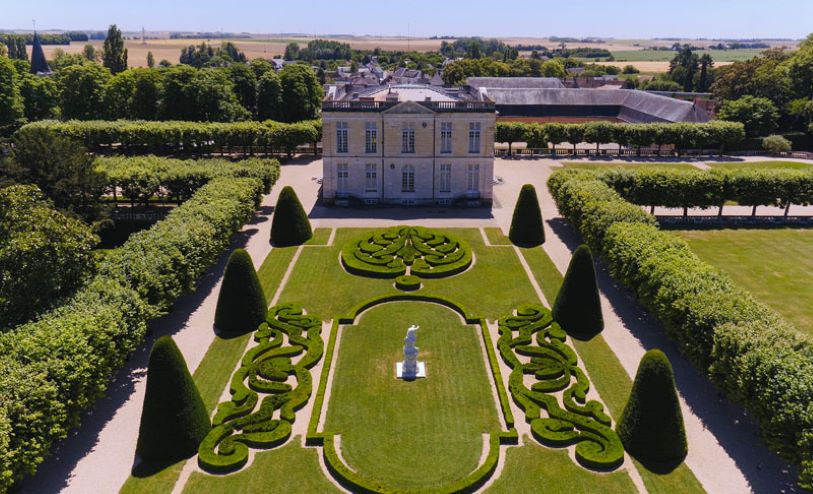
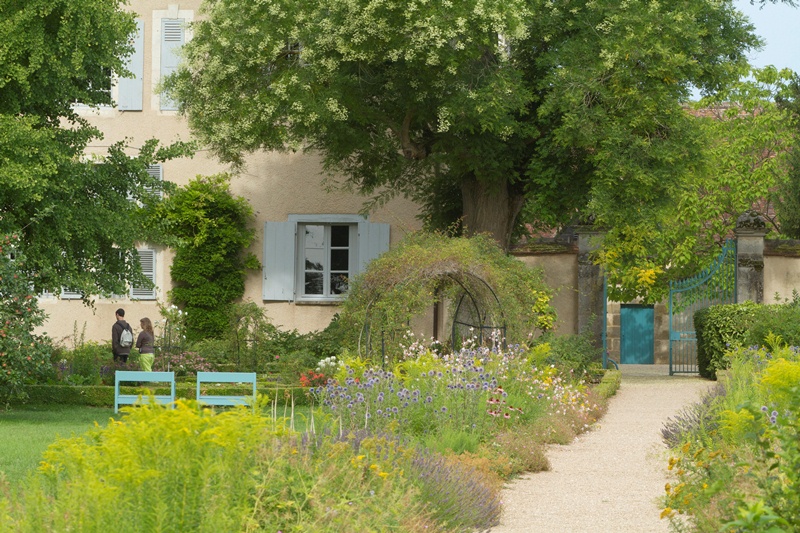
In the south of our region is rich farmland and a number of excellent gardens, including:
The Jewel of the Berry. A beautiful chateau on a "homely" scale, with stables and other buildings, a walled garden and gardens in the French, Italian and English styles.
Visiting this lovely place you really feel you have discovered somewhere very special. You enter a courtyard with the stables on one side and the chateau on the other, host to plant fairs and other festivals.
The chateau is built in the style of the Petit Trianon at Versailles, a celebrated example of the transition from the Rococo style of the earlier part of the 18th century, to the more sober and refined, Neoclassical style of the 1760s and onward.
The walled cut flower garden is a treasure, with an exotic glasshouse and extensive flower displays according to season; an exhuberent display in a formal setting.
To one side of the chateau is a complex French parterre in clipped Box and gravel, outlined with clipped trees and ballustrades, while an Italian water feature and tree-lined avenue stretch out on another side.
Meanwhile an English-style park extends to 80Ha and features a huge naturalistic lake, rare trees and grass carpeted with wild flowers (including many forms of wild orchid) in their millions.
A romantic writer's garden. The home of writer George Sand (1804-1876) hosted many of the finest artists and writers of her time, including Chopin, Balzac, Listz, Flaubert, Turgenev, and Delacroix. The 5 Ha garden is classified as one of the Notable Gardens of France while the house is home to an important classical music festival each summer.
The gardens have been lovingly restored to the way they were in the time of George Sand. It combines features of a utopian 18th century French garden and a romantic English garden.
It has a court of honor under a large tree; an avenue that crosses the wooded park to a lake; a garden of aromatic plants; a garden of cedar trees; and a garden of climbing roses. An orchard and a huge vegetable garden reflect her interest in the poor, workers and womens rights.
In several garden areas the writings of George Sand can be admired alongside the garden which inspired them.




You are spoiled for choice in this part of the Loire, where famous chateaux and their associated gardens abound! Centred on the city of Tours, where many clients arrive by train from Paris.
The fairy-tale gardens of a medieval castle. Rivau stands out among other Loire Valley castles as it is one of the few to combine the rough and authentic architecture of a fortress with the refined ornamentation of a castle owned by powerful medieval lords, close to the King of France. The Chateau du Rivau is built upon a square scheme with round towers at each angle and dry moats dug into bedrock. This scheme is very typical of the 14th century and the building was redesigned around this original through the 15th and 16th centuries.
The twelve gardens of Rivau blend botanical collections with creative gardening. Guided by the topiary shapes of imps, fairies and other fantastical creatures, visitors are immersed in the site's historical past. The ogre's cabin, the dragon of the enchanted forest, the flower-pot family all await discovery.
Each garden provides a succession of flowers: in May, the 6,000 irises, the Japanese peonies, alliums and oriental poppies dominate. In June, the 400 varieties of roses (recognised as a National collection by Le Conservatoire des Collections Végétales Spécialisées or CCVS) perfume the garden, later to be followed by drifts of red poppies, cornflowers and grasses.
The magical theme continues with the “Jardin des Philtres d’Amour” (love potions), a contemporary herb parterre, giant vegetables and Dahlias in the Potager de Gargantua and ancient vegetables in the mouth watering displays of the “Verger du Paradis”.
The gardens of Rivau are also a contemporary sculpture park. Every year, artists are invited to present a work of art that bears some relationship to the gardens (in partnership with the Centre de Création Contemporaine) and these are displayed amongst 400 year- old Box and the park’s remarkable trees.
World famous Renaissance gardens. This remarkable, privately owned Renaissance chateau was constructed in 1536, one of the last great chateaux to be built in the region. It sits on the site of an older fortress, overlooking the Loire and Cher valleys. In 1906 it was bought by Joachim Carvallo, who restored the chateau and reconstructed the gardens in the original style. These gardens have made Villandry justly famous throughout the world.
The gardens are strictly geometrical and are constructed on four levels. The Ornamental Vegetable Garden covers more than 3 acres (12,500 sq.m.) in an attractive mix of flowers and vegetables, a display changed twice a year.
The Pleasure Garden features low box hedges trimmed in intricate or geometrical patterns and is in three sections: the "Jardin d'Amour", divided in four parterres (tender love, passionate love, flighty love and tragic love), the "Jardin de la Musique" with box, yew and flowers designed as musical symbols and the "Jardin des Simples" with aromatic, condiment and medicinal herbs.
The calming Water Garden features a large plane of water with fountains and vast lawns, while the new Jardin du Soleil, in three sections, is a riot of colour from spring through to the autumn. Colour-themed planted areas (blue and white for the sky,orange and yellow for the sun) surround a star-shaped pool; there is a special area for the children with a hedge maze.
There are a number of events and exhibitions held each year and while the gardens are truely remarkable, the chateau itself is worth a look.
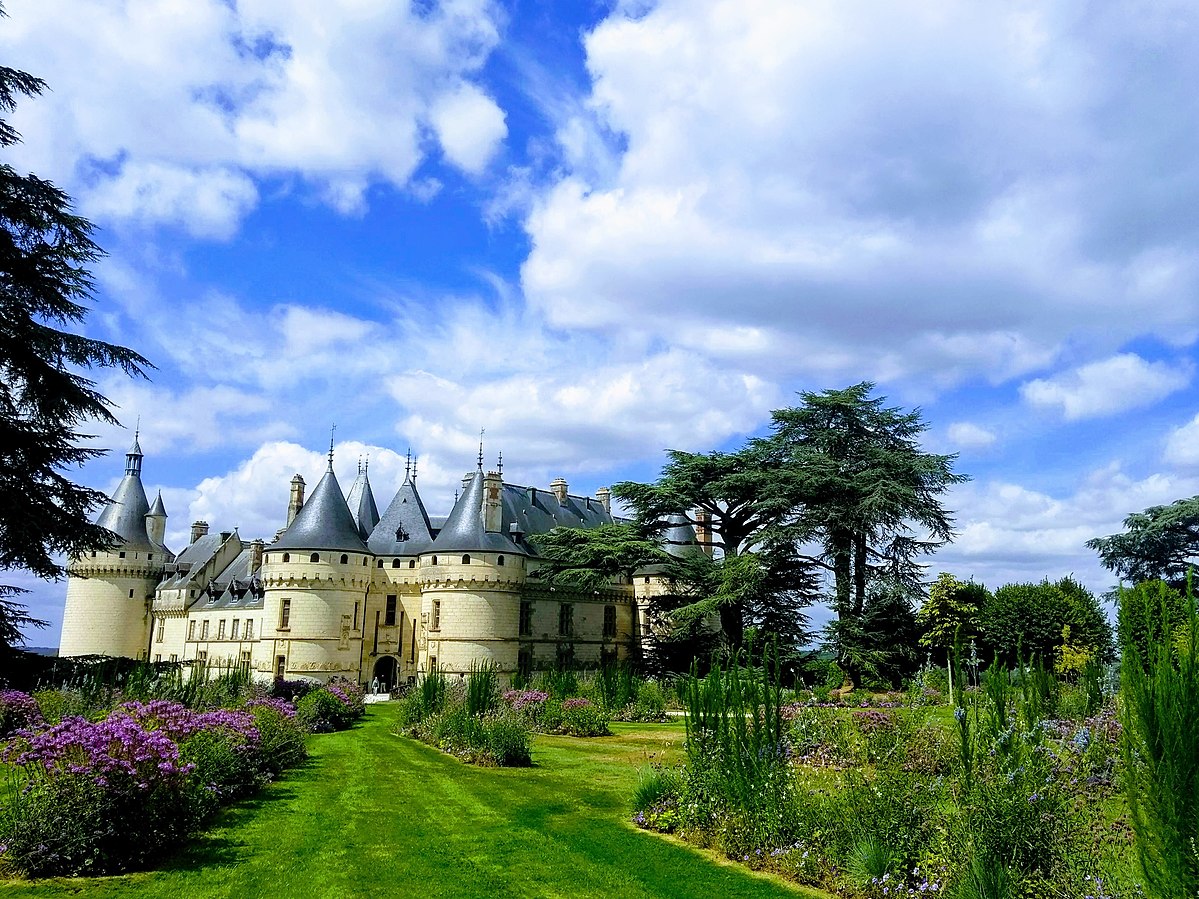
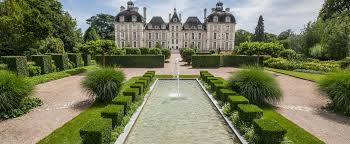

Stretching diagonally across the centre of the region, with the elegant city of Blois at its heart, the department contains many important royal and aristocratic castles and grand homes.
A fine, state-owned chateau & a celebration of the garden arts. The chateau and 19th-C landscaped park at Chaumont are worth a visit in their own right, but it is the International Festival of Gardening which has made it rightly famous throughout the gardening world.
A castle has existed on this remarkable site, perched on a promontory above the River Loire, since the 10th century. It was once owned by Queen Catherine de Medicis and by Diane de Poitiers, and in the 19th century by the Prince and Princess de Broglie who constructed the model farm buildings and the park.
A cultural centre for centuries, the Region of Centre- Val de Loire has continued this tradition since taking ownership in 2007, creating a centre for the landscape and natural arts.
Crossing from the castle gardens to the festival site via a footbridge, there are around 25 new themed gardens to explore each year including exhibits from China and Japan in addition to those of French and other European designers and artists.
An additional area houses perminant gardens from some of the worlds emblemematic designers; this really does make for a wonderful day out!
The chateau which inspired Captain Haddock's country house in The Adventures of Tintin. Famous with children throughout the world as the inspiration for Marlinspike Hall, this privately owned estate has belonged to the Hurault family for more than six centuries. The architect's father was chancellor (Justice minister) to French kings Henri III and Henri IV.
The chateau is in the purest Louis XIII classical style and perfectly preserved in the middle of a sea of carefully maintained lawns.
A huge landscape park features many notable trees and can be toured by electric car and boat. The chateau is famous for its hunting stables and dogs, and near the dog pens can be found the delightful walled vegetable and flower garden.
A new garden was created in 2005 to replace an original vegetable garden, linking the chateau to the orangery and the 17th to the 21st century. Its design and construction by landscape apprentices was the subject of a live "make-over" program on French TV.
Designed around a central access which starts at the gates of the chateau, the design divides the space into four "rooms" with both formal and informal shapes. Formal components include hedges of Hornbeam, regularly spaced clipped shrubs, a fine modern pergola and a rectangular pool, while a sinuous bed ties the elements together.
Planting includes: 8,000 bulbs, 3,800 herbacious plants in 73 varieties, 1,300 shrubs, 600 grasses, 600 bamboos, 450 hornbeam and 300 lavenders.
If you can, visit the plant fair in March, one of the first of the gardening year.
The Loire Valley offers gardens in a wide range of colours and styles. Our tours give you a unique opportunity to visit a number of these over three days or more, touring with an expert in the subject. As enthusiasts ourselves, we make a point of seeking out the best.